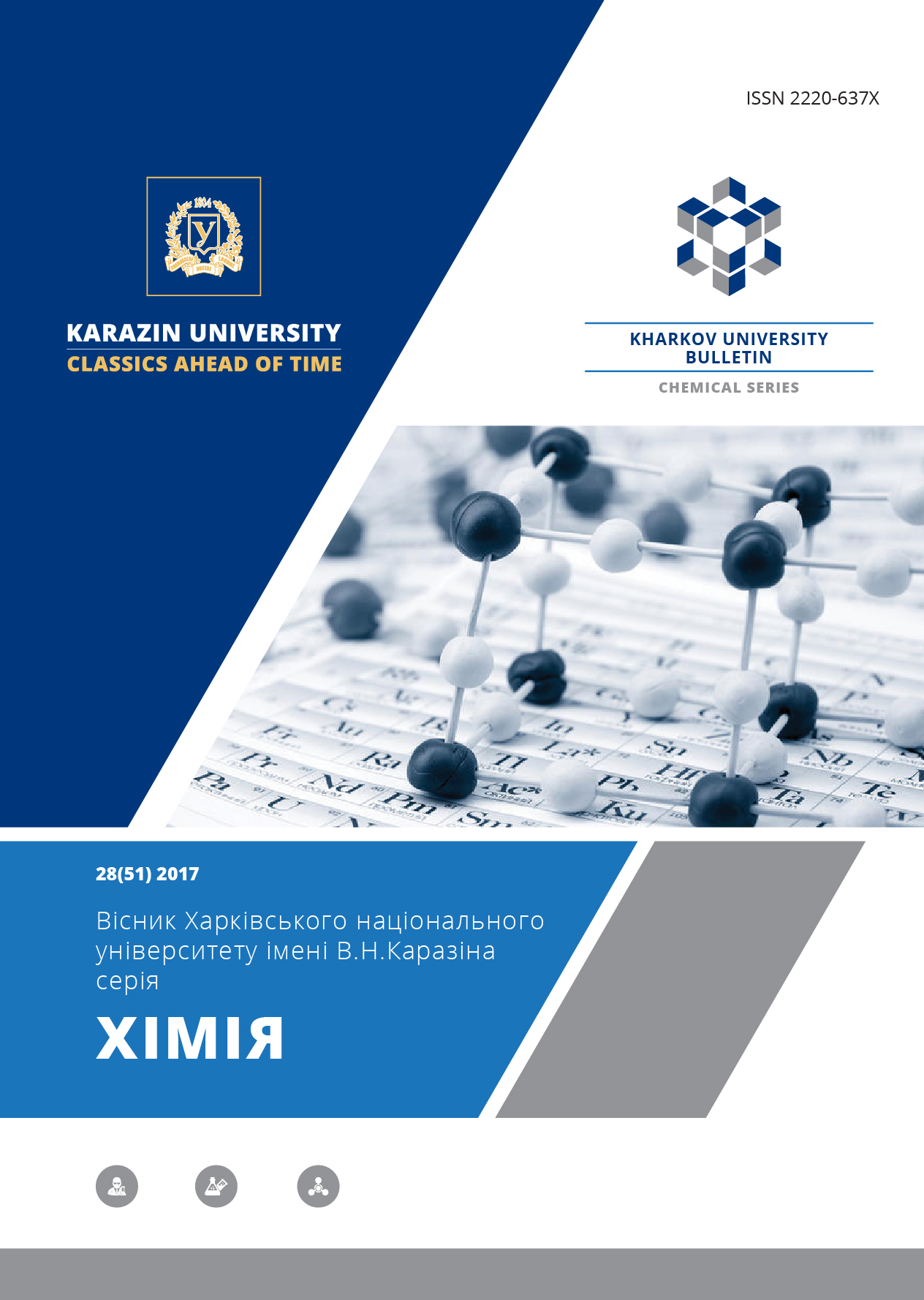Spectral study of ascorbic acid forms in radical chain oxidation processes in aprotic medium
Abstract
UV-spectrophotometrically confirmed the existence of reduced, oxidized and ionic forms of ascorbic acid in solutions obtained as a result of auto-oxidation of ascorbic acid in aprotic medium and oxidation of organic substrate in the ascorbic acid presence. NMR spectroscopy showed that ascorbic acid during the inhibition of radical chain oxidation of an organic substrate in the aprotic medium at 348 K irreversibly oxidizes to dehydroascorbic acid. It has been proved that further dehydroascorbic acid oxidation with the 2,3-diketogulonic acid formation does not occur under these conditions.
Downloads
References
Yamamoto I., Tai A., Fujinami Y., Sasaki K., Okazaki S. Synthesis and Characterization of a Series of Novel Monoacylated Ascorbic Acid Derivatives, 6-O-Acyl-2-O-r-D-glucopyranosyl-L-ascorbic Acids, as Skin Antioxidants // J. Med. Chem. – 2002. – Vol. 45. – P. 462-468.
Nielsen J. H., Kristiansen G. H., Andersen H. J. Ascorbic Acid and Ascorbic Acid 6-Palmitate Induced Oxidation in Egg Yolk Dispersions // J. Agric. Food Chem. – 2000. – Vol. 48. – P. 1564-1568.
Skrovankova S., Mlcek J., Sochor J., Baron M., Kynicky J., Jurikova T. Determination of Ascorbic Acid by Electrochemical Techniques and other Methods // Int. J. Electrochem. Sci. – 2015. – Vol. 10. – P. 2421-2431.
Wang Y.-N., Lau K.-Ch., Lam W. W. Y., Man W.-L., Leung Ch.-F., Lau T.-Ch. Kinetics and Mechanism of the Oxidation of Ascorbic Acid in Aqueous Solutions by a trans-Dioxoruthenium(VI) Complex // Inorg. Chem. – 2009. – Vol. 48. – P. 400-406.
Uluata S., McClements D.J., Decker E.A. How the multiple antioxidant properties of ascorbic acid affect lipid oxidation in oil-in-water emulsions // J. Agric. Food Chem. – 2015. – Vol. 63. – P. 1819-1824.
Bradshaw M. P., Prenzler P. D., Scollary G. R. Ascorbic Acid-Induced Browning of (+)-Catechin In a Model Wine System // J. Agric. Food Chem. – 2001. – Vol. 49. – P. 934-939.
Jayasinghe C., Gotoh N., Wada S. Pro-oxidant/antioxidant behaviours of ascorbic acid, toco-pherol, and plant extracts in n-3 highly unsaturated fatty acid rich oil-in-water emulsions // Food Chem. – 2013. – Vol. 141. – P. 3077-3084.
Liao M.-L., Seib P. A. Chemistry of L-ascorbic Acid Related to Foods // Food Chem. – 1988. – Vol. 30. – P. 289-312.
Retsky K.L. Freeman M.W., Frei B. Ascorbic acid oxidation product(s) protect human low density lipoprotein against atherogenic modification // J. Biol. Chem. - 1993. - Vol. 268. - Р. 1304-1309.
Yuan J.-P., Chen F. Degradation of Ascorbic Acid in Aqueous Solution // J. Agric. Food Chem. - 1998. - Vol. 46, №12. - Р. 5078-5082.
Rudakova L.V., Savushkin R.V, Khripushin V.V., Selemenev V.F. Multiparameter optimiza-tion of a composition of the mixed solvents for extraction and spectrophotometric definitions of ascorbic and nicotinic acids. // Proceeding of Voronezh State University. Series: Chemistry. Biology. Pharmacy. - 2008. - № 1. - Р. 32-36.
Dabbagh H. A., Azami F., Farrokhpour H. Y., Chermahini A. N. UV-vis, NMR and FT-IR spectra of tautomers of vitamin C. Experimental and DFT calculations. // J. Chil. Chem. Soc. – 2014. – Vol. 59. – Р. 2588-2594.




